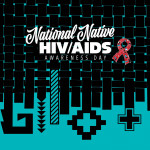In an elegant essay published more than a decade ago about life on the upper Mississippi, the American novelist Diane Johnson wrote that bigotry struck her as “borne of unfamiliarity with the problems other Americans have.” I remember taking immediate issue with the observation. I had grown up on another river deep in the fly-over, the Missouri, and as a child I’d encountered so many instances of conscious prejudices, most if it directed at Native Americans, that such an explanation struck me as woefully misguided.
Johnson’s remarks came back to me soon after I met the activist Lisa Tiger this fall in New York City, for when Tiger, a 29-year-old member of the Muscogee Nation and a determined woman of Creek, Seminole and Cherokee descent, tells the story of her HIV status, unfamiliarity and its social fallout are very much at the heart of things. So is triumph. This is someone who has moved from a past filled with alcoholism, racism and violence into a present that includes speaking out eloquently not only about stemming the epidemic but about combating, addiction, fighting bigotry and developing self-esteem. Listening to her personal history, I had to think hard about the relationship between tragedy and personal transformation.
I also had to revisit my past. The Native Americans of my teenage years were mostly of Sioux lineage, and seemed always at the margins of school life. They didn’t tread the established path to popularity (yearbook, athletics, homecoming court) even though these activities at my school in South Dakota, sometimes enjoyably sometimes offensively, were, based on Lakota concepts or rituals. Tiger, on the other hand, embodied success in just these areas. Growing up in Muskogee, Oklahoma—a town of 40,000 known primarily as the stomping grounds of Merle Haggard’s mythical redneck Okie—she was head cheerleader, a very competitive athlete, and, yes, homecoming queen. She was—is—beautiful, with alert brown eyes and hair so and thick that for once the clichéd term cascading seems entirely appropriate.
As does the phrase happy childhood. Even though her father, the artist Jerome Tiger, had died of an accidental self-inflicted gunshot wound when she was two, Lisa grew up in fortunate circumstances. “My mom worked really hard after my dad died,” Lisa told me during a long enjoyable conversation, “and reproduced his prints. We had a very successful business.” For Lisa, her older sister, Dana, and their younger brother, Chris, there was always money for things like dance lessons and gymnastics, activities that helped instill self-discipline. Lisa had such splendid resolve that when a male friend bet her that she could not finish high school without taking a drink or having sex, she took him up on it. She won the wager—quite easily.
After Lisa finished high school in 1983, the local economy soured and so did her life. She decided not to attend college, she says she had been so caught up in the rigmarole of high school that she hadn’t given thought to her future. Instead, she started drinking. “I had heard all my life about the high incidence of alcoholism among Indians,” she admits, “and about the role this played in the fact that the average Native American’s life span is only 45 years.” But the information didn’t sink in. Lisa says she “drank on weekends for three solid years. I had sex the first time, drunk, of course, when I was 20. I had gained weight. I had no self-esteem.” Her downward spiral, she confesses, was a shock to her friends.
Particularly surprised was a guy named Kevin, a football star whom she’d been dating since the ninth grade. Lisa’s mother so wanted the couple to marry that she had moved Kevin into the family’s household while Lisa was still in school. Lisa did not want Kevin there, saying his proximity exposed to all sorts of gossip and she now calls the arrangement “sick”. It is with such remarks that I began to realize why Lisa is so hard on herself. She has to be: Her overriding purpose, she says, “is to show other people my mistakes so that they might avoid making similar ones themselves.”
In 1985, with the support of friends, Lisa managed to quit drinking and get herself back into shape and became an aerobics instructor. But the missteps—what she calls “instances of ignorance”—continued. Especially with men. “It’s almost like guys want to conquer me,” she says, “because I’ve always been so strong willed and ornery. But I’ve also been stupid and vulnerable. I tell girls in my speeches now that they have to draw a line with guys, and when the guys cross it, that’s it. But what people do—what I did—is to draw the line and let somebody cross it, again and again.”
No one crossed the line more often than Ronnie, the man who she says exposed her to HIV. Ronnie and Lisa started dating in 1988, and six months later they moved in together. Ronnie was from Fort Gibson, Oklahoma a 10-minute drive from Muskogee, and was around Lisa’s age. “I’d always heard about him,” she says, “and he’d always heard about me. He’d been voted most handsome in high school, and he played baseball in college, which I liked, because I like people in sports.”

Carolyn Jones
Before long, Lisa discovered that Ronnie had a problem with alcohol. Displaying an attitude she says is typical of all too many women, she thought she could help him get sober. Even though she had a hand in helping him reduce his consumption, the main lesson she learned here was that “you can waste a lot of time and energy o just one person who doesn’t really want to do things for himself, or you can go out and help someone who really wants help.”
At the start of their relationship, Lisa and Ronnie employed condoms during sex, but by the time they had set up house together they had stopped using them. The epidemic had been growing for a decade, but Lisa didn’t think HIV was a problem in Oklahoma: AIDS was elsewhere. She says all that television reports she’d seen on the subject had been about places like New York and San Francisco. “I was ignorant in so many ways,” she says.
About other sexual matters Lisa was somewhat more informed. Her longtime best friend, for example—a guy who with his lover recently moved into the Muskogee household Lisa shares with her mother and uncle—is gay, and they’ve been discussing intimate matters for years. “He’s been talking to me since he was 19 about who he’s been with. And he’s been very, very promiscuous.” Lisa says she is very comfortable with homosexuality but that many of her neighbors are not. “In Muskogee you can’t be gay or bisexual without having a pretty heavy load.” Lisa’s gay friend has been beaten up repeatedly, and moved in with the Tigers in search of a more supportive environment.
Such stigma-laden attitudes probably had a lot to do with Ronnie not leveling with Lisa about his past. Specifically, she began to hear rumors that her boyfriend was bisexual, so she asked him whether they should be tested for HIV. “I was trying to be careful,” she says, “but he said he had never been with a man. And he put a guilt trip on me for even thinking such a thing.” Lisa did some checking-up on the rumors, before deciding they were spurious.
In Lisa’s eyes, the relationship unraveled for other reasons. In 1990, her brother Chris was murdered during a barroom incident that carried racial overtones. Lisa, conditioned to being the one others came to in a crisis, was devastated. She was so consumed by the aftermath, which included a protracted trial, that she had nothing emotionally left over for Ronnie. They broke up.
By the time Lisa saw Ronnie again, in 1992, he had lost a lot of weight. She asked him if he had AIDS. Nervously, he changed the subject. “That summer,” Lisa says, “I was talking to my gay friend and I said, ‘Tell me the truth: do you think Ronnie is gay or bisexual?’ I said, ‘Have you ever been with him?’ And he said, ‘Yes, Lisa. I was with him while you were still dating him.’ They’d had a little affair. He told me it started a week after my brother died. Ronnie started making advances toward him. He was too weak to resist, and I was too distracted to notice.”
Furious with her gay friend’s revelation, Lisa called Ronnie who denied the report. She then calmed down enough to have herself tested for HIV. “A week later, I called my answering machine,” she remembers. “I was at a pow-wow a couple of hours from home. I got a message from the doctor, who is my mom’s first cousin, saying, ‘Lisa, you need to call me.’ It was scary. I wanted to go home but the weather was really bad. I had to stay in a tent while it poured down rain. The next day it was bright and sunny but I was very nervous. I called my mom from the road and said I was worried. I said I wanted her to call for the results. I said I’d be home later. I went to a nearby river to sit and think. When I walked in the house, my mom had been crying. I knew then.”
Lisa says bother her mother and her sister were brought low by the news, but that she herself felt immediately determined to raise the family’s spirits. More than anything, she felt tremendously strong, a spirit that has left her for only a brief period in the two years since. The day she got her results, she says, was the first time after the death of her brother that she experienced any kind of emotional relief.
“I thought, I can be happy now. I can do a lot.”
Before Lisa could help others, however, before she could transform her tale of ignorance into a powerful message of transformation, she had to deal with her anger toward Ronnie. There was a lot to process. The day after she received her test results, Ronnie had entered the hospital with PCP. After he recovered, Lisa pressed criminal charges against him.
“There’s a law in Oklahoma saying that if you knowingly have HIV or AIDS and intentionally put somebody at risk for it that it’s punishable by two years in prison. You’d think this would have been an open-and-shut case. A police investigation found out that [Ronnie] had been tested twice in 1988. A girl he had infected before we met told him she was HIV positive and set him up with a doctor’s appointment. So they got all the evidence. But all the evidence in the world doesn’t prove that he intended to infect me. There’s a sexually transmitted diseases law in Oklahoma, to which they should have added AIDS, that says if you intentionally or recklessly infect someone you’re liable. But they didn’t put the world “reckless” in the AIDS legislation. So there’s nothing they can do [in my case]. Because they still can’t prove intent.”
Although Lisa and Ronnie now share the same doctor in Tulsa, and although Lisa has had contact with Ronnie’s wife (he married a woman he had dated—and had exposed to HIV—after Lisa, she says she does not forgive him.
“It’s not a matter of forgiving,” Lisa says. “I look at life in a different way. I feel that I have to go warn people about people like him. If his wife can forgive him, that’s her business.”
If she paid attention to the rumors that sometimes swirl around her in Muskogee, Lisa might feel torn up in another way. Condolence cards about Lisa have come to the house. She’s been told she’s deathly ill, even though her program of nutrition, exercise and antivirals (currently ddI), has kept her feeling fit: Her T-cell count is 952. She’s even been accused of making her stories up. A lot of this gossip reaches her through her friend Betty Smith, who wrote a July 1992 story in The Muskogee Phoenix that contained Lisa’s HIV coming-out story. “I try to encourage openness about HIV among people who are positive,” Lisa says. “If I’d read such an article, I would have been the one person out of a thousand who would have listened. But it was not a story I’d gotten.”
As soon as the Phoenix article appeared, people started calling the Tiger household to offer Lisa support. Before long, at the urging of Wilma Mankiller, chief of the Cherokee Nation, Lisa decided to give up the framing and matting business she had been running out of her family’s gallery in order to become a full-time speaker and activist. She’s been on the road constantly for the past couple of years, speaking to a variety of groups. She frames her HIV-related speeches within a larger message encouraging good health and self-esteem; she sees all her work as a way of promoting both individual and social well-being.
Lisa says that her peripatetic way of life has brought many rewards, the greatest being the conviction that she has made a difference to someone’s sense of self-worth, and another the feeling of having friends, some of them romantic, all over the place. “I have had many, many different boyfriends over the past two years. I haven’t had sex with them. It’s been fun, because it seems that more people have been interested in me since I tested HIV positive than ever before. But of course I’m around more people now. A lot of them want to have sex with me, but I just don’t want to have sex. I don’t want it in my life right now. She stresses that this is not a permanent vow.
One result of her activism for which Lisa is grateful is the relative lack of discrimination she has encountered because of her HIV status. She is quick to speculate that this is because she contracted HIV in an “acceptable” way: “If I had been a prostitute or had been shooting up some people would say I deserved it.” There have been pockets of rejection, however, Lisa says, frequently among gay men. “When I spoke at President Clinton’s inauguration ceremonies, I heard a gay man say that the only reason people listen to me is because I’m a heterosexual woman, and that he’d been saying the same things for years. I felt like he shouldn’t hold that against me. It’s other people’s stupidity that they weren’t listening to people like him before.” Lisa says that in her speeches she focuses not on the fact that she was exposed to HIV by a bisexual man but on ways that both men and women can protect themselves from transmission. “They always seem to cut that out of my stories and make it sound like I’m a homophobic person who’s blaming bisexual men.”
None of this has kept Lisa from agitating for gay and lesbian rights, or from speaking out against racism, sexism and homophobia. But while she has worked, and will continue to work with groups like the National Minority AIDS Council, the main focus of her efforts remains among Native Americans. She spends a lot of time with the teenagers at the Jack Brown Treatment Center, a teen-based facility in Tahlequah, Oklahoma, because she feels that younger peopled are particular receptive to her message She’s on the board of Positively Nation, a national group working with HIV positive Native Americans. And she’s putting energy into developing an aerobic workout video that will use Native American dance and music.
Mostly, though, Lisa Tiger spends he days bringing her message to tribal groups across the country. “People listen to me because I’m a Native American when they wouldn’t listen to the same story from a white woman. All the tragedy that I’ve had, with my dad’s death and my brother’s death—they’ve experienced similar things. We have that connection. Outside the Native American community, people empathize with my experience, but in a more general way. Isn’t it kind of sad that you have to have so much tragedy before you’re accepted?”







Comments
Comments